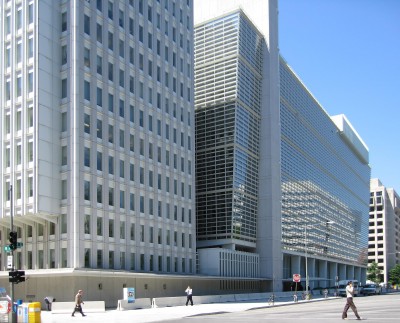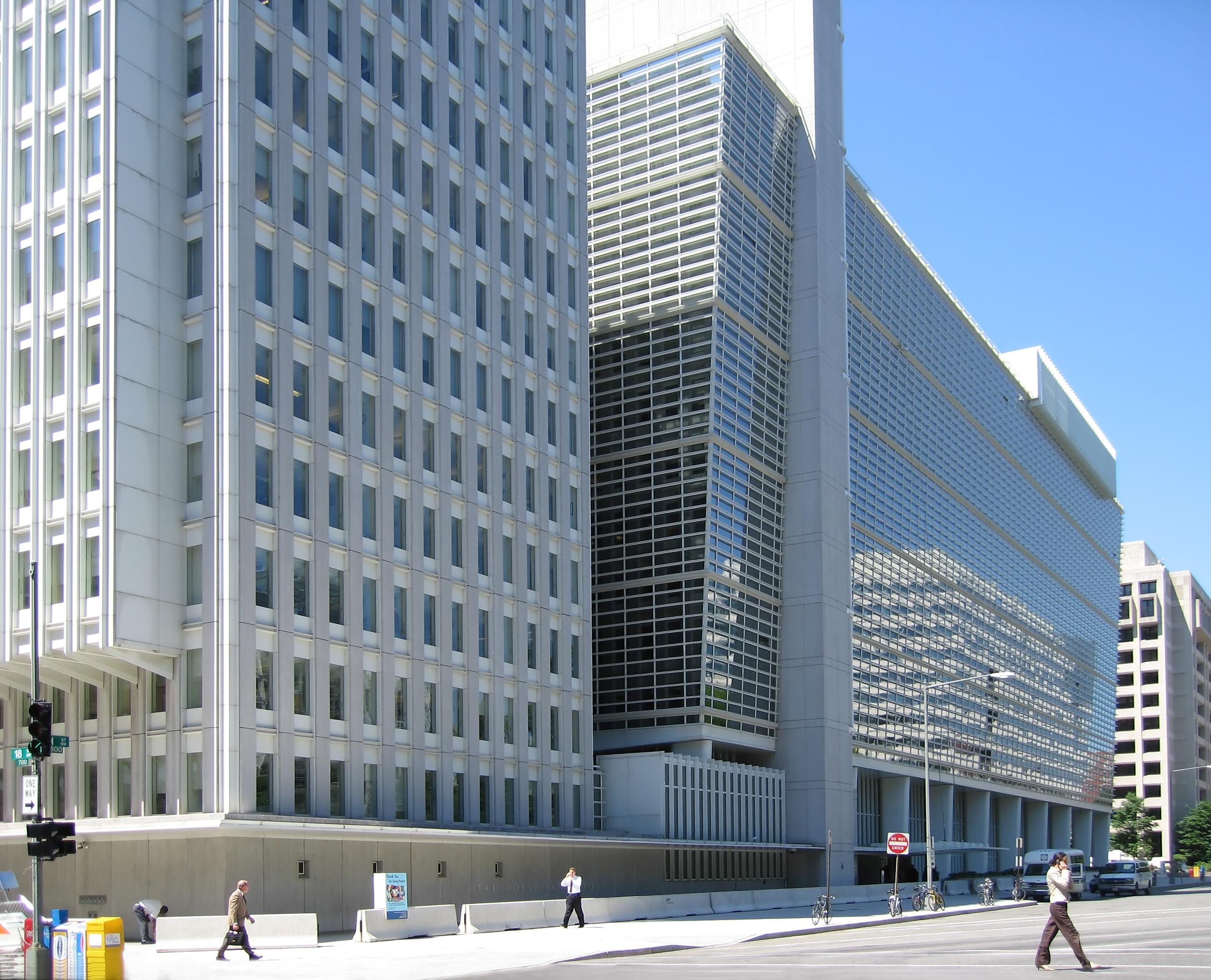 In the fall of 2003, I began writing a book on internal transparency at the World Bank based largely on my personal experiences and observations from working inside the institution. In 2000, along with my colleague David Wheeler, I had launched B-SPAN, a webcasting system that streamed videos of Bank policy dialogues to external audiences. The key principle of B-SPAN, based on the well-known C-SPAN model of the U.S. Congress, was that once the camera was turned on, the unedited streams would allow viewers to receive an uncensored glimpse of the debates occurring within the Bank.
In the fall of 2003, I began writing a book on internal transparency at the World Bank based largely on my personal experiences and observations from working inside the institution. In 2000, along with my colleague David Wheeler, I had launched B-SPAN, a webcasting system that streamed videos of Bank policy dialogues to external audiences. The key principle of B-SPAN, based on the well-known C-SPAN model of the U.S. Congress, was that once the camera was turned on, the unedited streams would allow viewers to receive an uncensored glimpse of the debates occurring within the Bank.
During this period the World Bank was laboring under the weight of an unsavory image. Despite hard work and important achievements by thousands of dedicated staff, the institution was often seen as a monolithic empire of rich financiers, caucusing behind closed doors to determine the economic fate of millions of poor and powerless people – often with damaging results.
Civil society actors, emboldened by new and emerging technologies such as the Internet and email, reacted by orchestrating mass protests. Police responded by making the Bank and the International Monetary Fund virtual fortresses, surrounded by horsebound riot police with gasmasks, during their annual meetings.
Initial Successes
In some ways, Bank lending missteps had manifested such an image, as did the Bank’s seeming indifference to the views of non-governmental stakeholders. But as someone who worked inside the Bank, I knew first-hand about the contributions my colleagues were making to advance economic growth and reduce poverty in destitute countries. B-SPAN was designed to share their stories and build new audiences.
B-SPAN was also an opportunity to share knowledge with development practitioners around the world to help them with their own work to reduce global poverty, a key tenet of then-Bank President James Wolfensohn’s “knowledge bank.” Finally, B-SPAN was an attempt to connect with the institution’s critics, to show them we were listening, sharing, and ready to learn as well.
In most circles within the Bank, B-SPAN was well received. The large majority of staff understood the Bank needed to be more open and accountable with its stakeholders to help the institution establish a measure of legitimacy and enable it to mold economic policy in its client countries. Over the five years I managed the system, we produced more than 700 unedited webcasts on the entire gamut of the Bank’s operational and research activities. By 2004, B-SPAN was being watched by a quarter-million viewers and attracting almost 2 percent of the Bank’s Internet traffic.
Resistance
However, the cultural norms of the Bank that had evolved and hardened over its more than six decades of existence viewed transparency as an anathema. Information was proprietary. It was confidential. When it was released at all, it was highly choreographed and released to selected audiences.
Key powerbrokers within the Bank reacted to B-SPAN not just with skepticism but outright hostility. As I began writing my book, I kept recalling an utterance from one supervisor that “transparency was yesterday’s problem” for the Bank. I well understood that my defense of an uncensored system could end my Bank career, but I also knew that few things were as important for the Bank’s viability as its willingness to establish and maintain relationships based on mutual respect and trust.
By 2005, Bank figures opposed to the project had moved to take the funding out of B-SPAN and impose costs that made it prohibitively expensive to use. The webcasting system ossified and fell into disuse.
A New Window
The story could well have ended there. But by 2011 I had noticed important changes at the Bank that signaled a willingness to become more open, transparent, and inclusive of external participation. Under the leadership of Bank President Robert Zoellick, the institution has made important advances, including allowing greater public access to project documents with an updated Access to Information Disclosure Policy, as well as free access to its immense databases on development through its Open Data Initiative. The Bank had also begun disclosing its own financial data and was receiving plaudits for its aid transparency.
I sensed the time was right to begin querying officials on the merits of investing again in B-SPAN. The Bank had the most to gain, I suggested. Even in a time of shrinking budgets, the cost of running the system was minimal. In fact, a pricing mechanism could be implemented that would make B-SPAN generate revenue. More importantly, with advances in streaming technologies and new social media tools and mobile phone applications, B-SPAN streams could now reach the Bank’s 185-country membership instantaneously and at little cost.
Most importantly, implementation would be highly beneficial to the Bank. Millions of viewers would see the Bank as the focal point for new information and research on development. In a highly competitive environment where the Bank was losing market share to bilateral and private-sector financing, Bank clients would increasingly focus on the institution as a one-stop shop for administering their development needs. Just one project generated from a B-SPAN webcast could finance the system for years.
Curiously, my forays were met by suggestions that B-SPAN was a dinosaur of another epoch, an invention whose time had come and gone. One official said viewers would not be interested in watching two-hour Bank seminars. But where was the logic in that? B-SPAN was not designed to appeal to the same audience as CNN, which caters to news junkies flipping through three-minute streams of breaking news events. B-SPAN was focused on government officials, economists, academics, and development practitioners who wanted or needed to become immersed in the nitty-gritty of a particular subject.
To suggest this audience was not relevant was to suggest the Bank’s content was not relevant either. If no one is interested in the policy dialogues taking place at the Bank, then why hold them at all? Why should these events be available to staff and invited guests, but not to the thousands outside Washington who might benefit from them too?
The drive to revive B-SPAN appeared dead until July, when The New York Times published a lengthy article on the Bank’s progress with openness. Among the highlights was a focus on the absence of B-SPAN as a possible gap in the Bank’s transparency strategy. Shortly thereafter, the Center for Global Development, a Washington think tank, published an opinion piece urging the Bank to once again fund B-SPAN. These developments prompted me to appeal to civil society actors to sign a letter requesting that President Zoellick fund B-SPAN. By the time of the Bank’s annual meetings in September, more than 100 civil society organizations, development officials, and activists had joined the call to resurrect B-SPAN. As of this writing, we await a response that we think will benefit the Bank as much as anyone.
Not long after my book, The World Bank Unveiled: Inside the Revolutionary Struggle for Transparency, was published last year, I had dinner with a long-time and sage Bank operative. “The desert is littered with the bones of explorers,” he said. “B-SPAN was just ahead of its time.” Perhaps he was right. But, then again, perhaps not.
